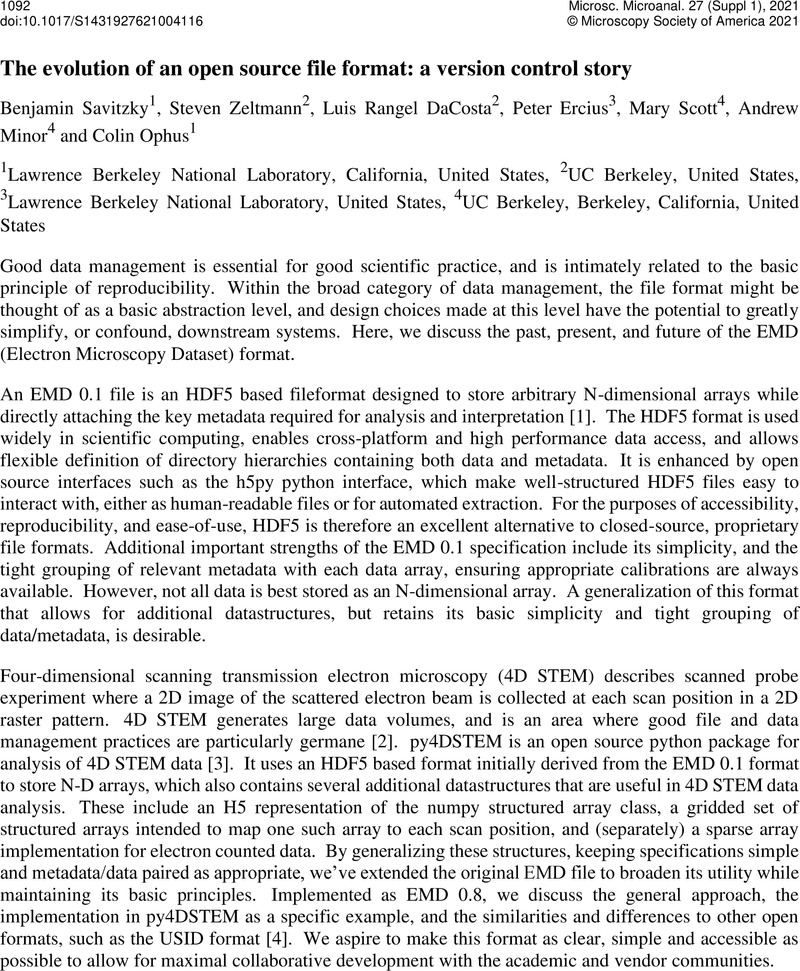No CrossRef data available.
Article contents
The evolution of an open source file format: a version control story
Published online by Cambridge University Press: 30 July 2021
Abstract

- Type
- Data Management, Version Control, and Multiformat Analysis in Electron Microscopy
- Information
- Copyright
- Copyright © The Author(s), 2021. Published by Cambridge University Press on behalf of the Microscopy Society of America




